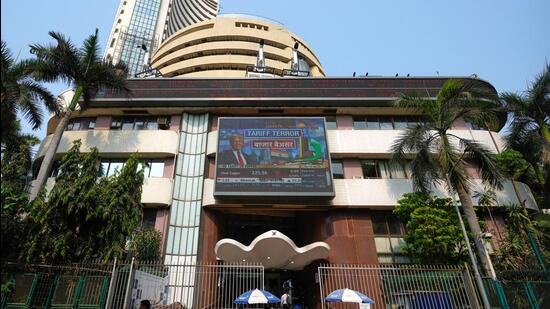MUMBAI, 3 April 2025 (Punjab Khabarnama Bureau): US President Donald Trump’s sweeping reciprocal tariffs, announced on April 2 under what he termed ‘Liberation Day’, have sent ripples through global markets, with India among the affected countries. Trump’s tariff measures include a 27% reciprocal tariff on Indian imports — half the rate the US claims India imposes on American goods. Additionally, a 25% tariff has been levied on auto imports, further complicating trade relations.
Despite lingering concerns, Indian analysts believe the impact on the country’s economy will be manageable. According to Hemant Jain, president of the PHD Chamber of Commerce and Industry (PHDCCI), India’s ‘price competitiveness’ and ‘supportive government policies’ will help absorb the tariff impact. PHDCCI estimates that the overall impact of the tariffs on India’s GDP will be a mere 0.1%.
Automobile industry in focus
The US tariffs have significant implications for the Indian automobile sector, particularly automakers and component suppliers. However, the 25% tariff on auto imports had already been announced under Section 232 in March and does not form part of the latest 27% tariff package.
Sanket Kelaskar, Analyst – Institutional Equity at Ashika Group, pointed out that the North American market constitutes 32% of Tata Motors-owned Jaguar Land Rover’s (JLR) volumes in 9MFY25, up from 25% a year ago. “The 25% tariff could force JLR to either hike prices or cut costs to maintain margins. Given its premium positioning, JLR may have some resilience, but near-term volume pressure is expected.”
Similarly, Royal Enfield, which holds an 8% share of the US mid-size motorcycle market, may see moderation of export growth. “The Super Meteor 650 ($7,999) is still cheaper than Harley-Davidson Iron 883 ($9,999), which offers some pricing cushion. However, the tariff could moderate export growth in the U.S,” said Kelaskar.
Auto component suppliers, which derive around 30% of their revenue from exports, with the US accounting for roughly a third of that, could also feel the pinch. “Auto components may be subject to tariffs from May 3, but confirmation is still pending. If imposed, this could impact major Indian suppliers like Samvardhana Motherson, Sona BLW, and Bharat Forge,” he said.
Broader economic implications
Apart from automobiles, other sectors such as textiles, pharmaceuticals, and electronics may also face headwinds.
Bajaj Broking Research noted that the tariff announcement has already led to currency fluctuations, with the Indian rupee depreciating in the non-deliverable forward (NDF) market.
The Federation of Indian Export Organisations (FIEO) expressed concern that higher tariffs could make Indian goods less competitive in the US market. However, Jain of PHDCCI remained optimistic.
“India’s robust industrial competitiveness will balance the impact of US tariff announcements and GDP will see only a 0.1% impact in the short term. However, in the medium term as the policy takes full effect, this shortfall will be negated,” he stated.
Diplomatic efforts and future trade relations
While the tariffs pose immediate challenges, analysts believe they could prompt a re-evaluation of global supply chains. “The US manufacturing wage is nearly ten times that of India, making it difficult to completely shift production. A revision of tariffs remains a possibility,” Kelaskar observed.
This view was also highlighted in a report published by the multinational investment bank UBS.
“In our base case (to which we assign a 50% probability), we would expect tariffs to be reduced from the levels announced by the President. The President himself invited negotiations, and Treasury Secretary Bessent said in a Bloomberg interview that the announced tariffs are “the high end of the number” and that countries could take steps to bring tariffs down,” said a UBS report, adding that this process could take time.
Looking ahead, Jain stressed the importance of continued collaboration with the US. “Given India’s sustained economic development and strategic importance, we expect negotiations towards a well-negotiated bilateral trade agreement,” he said.
Summary: Trump’s new tariffs pressure Indian industries, especially autos, but experts believe domestic demand and government policies will mitigate the impact.

